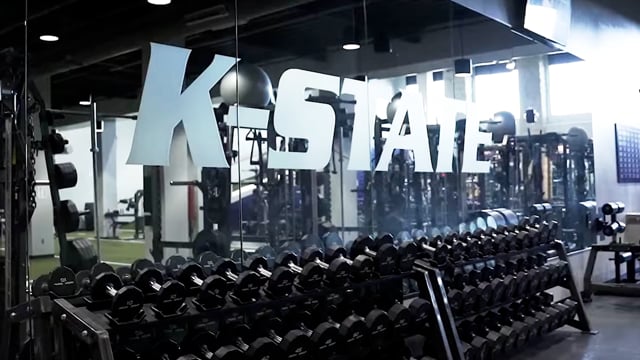Velocity Based Training Research Review 4

We are back with another VBT research review! It’s been a few months since we brought you a new crop of peer reviewed research, and we wanted to make sure we were keeping our information relevant for you and staying true to our mission of bringing science-backed research straight to you.
This week we covered three unique pieces of literature all related to Velocity Based Training in some capacity or other. We’re excited about these three and their findings so, without further ado, we’ll get right down to it!

STUDY 1
Velocity specificity, combination training and sport specific tasks
VBT research performed by researchers Cronin, McNair, and Marshall investigated whether or not velocity-specific strength training was important for improving overall sport performance for netball athletes. Twenty-one female netball players were randomly assigned to one of three groups (Strength Training n=7, Power Trained n=7, and Control n=7). Pre and Post testing measures consisted of a netball velocity throw, mean volume test, and mean power outputs. After 10 weeks of training, the strength and power trained groups had significantly improved in their netball throw velocity (by 12.4% for strength group, and 8.8% for power group). The strength trained group improved significantly more in the mean volume of weight lifted (85kg) and mean power output (13.25 W) than in either the power or control groups. Researchers concluded that the combination of strength training with intent to move load as fast as possible in addition to training sport-specific movements “promote efficient coordination and activation patterns.” Ultimately, training with maximal intent in the weight room and training specifically for sport outside of the weight room will yield the most positive sport-specific adaptations.
Cronin, J., McNair, P. J., & Marshall, R. N. (2001). Velocity specificity, combination training and sport specific tasks. Journal of Science and Medicine in Sport.
STUDY 2
Adaptations in athletic performance after ballistic power versus strength training
VBT research performed by researchers Cormie, McGuigan, and Newton looked to determine what the effects of either ballistic power training or heavy strength training had on improving athletic performance metrics in untrained individuals. Twenty-Four relatively weak men, as determined by the researchers, were randomized into three groups: strength training (ST: n=8), power training (PT: n=8), and control (n=8). All subjects tested their 1 repetition maximum, vertical jump, 40m sprint, and assessed their force/velocity profiles pre and post training. The training groups had three sessions per week for 10 weeks where subjects performed back squats with 75-90% RM load (ST), or maximal effort jump squats with 0-30% RM load (PT). Results showed significant improvements in jump and sprint performance with no significant differences between the groups for peak power (ST = 17.7% +/- 9.3%, PT = 17.6% +/- 4.5%) and for sprint performance (ST = 2.2% +/- 1.9%, PT = 3.6% +/- 2.3%). The ST group had a significant increase in maximal or 1RM strength that was significantly greater than the PT (ST = 31.2% +/- 11.3%, PT = 4.5% +/- 7.1%). Unique findings were changes in the force/velocity profiles where the PT group shifted their max power zone, and the ST group skewed towards velocity-deficient, but force-efficient. Researchers ultimately concluded that both strength and power are important traits to train for and depending on the sport, overall athleticism can be improved by improving both strength and power.
Cormie, P., McGuigan, M. R., & Newton, R. U. (2010). Adaptations in athletic performance after ballistic power versus strength training. Medicine and Science in Sports and Exercise, 42(8), 1582–1598.
STUDY 3
Changes in the human muscle force-velocity relationship in response to resistance training and subsequent detraining
VBT research performed by researchers Andersen et al., investigated the changes in an individual force/velocity profile in response to resistance training and then a detraining period. Twenty four sedentary male subjects were recruited for this study, none of whom had previously participated in regular resistance training. Subjects were separated into two groups; control (n = 10) and training (n = 14). Measurements (isokinetic dynamometry muscle strength test, maximal unloaded knee extension, muscle EMG test, muscle CSA at mid-femur, muscle biopsy and MHC analysis, and muscle twitch measurements) were taken pre-training, post-training, and post-detraining. Subjects initially trained for three months with 38 total training sessions evenly dispersed into three unique training cycles of progressive resistance exercise. Following this, subjects detrained for three months. Results were largely as expected and in most measures went from baseline (pre-training), to peak (post-training), to elevated baseline (detraining). The notable results were that after 3 months of detraining, maximal unloaded knee extension velocity and power both increased in conjunction with faster muscle twitch contractile properties and increased proportion of fast muscle MHC. Researchers believe that this increase in velocity is likely exclusive to unloaded movements (punching, kicking etc) but not loaded movements (sprinting, jumping etc) but recommended further research be done.
Andersen, L. L., Andersen, J. L., Magnusson, S. P., Suetta, C., Madsen, J. L., Christensen, L. R., & Aagaard, P. (2005). Changes in the human muscle force-velocity relationship in response to resistance training and subsequent detraining. Journal of Applied Physiology, 99(1), 87–94.
OTHER RELEVANT POSTS!
Curious about the Coach's perspective on VBT? Check out our Coach's Corner series!
Check out our Return To Play from Covid-19 series!
FOLLOW US!
Keep checking back for more velocity based training content, tips, tricks, and tools. And don’t forget to follow us on Twitter , Instagram and Linkedin and like us on Facebook.
Read more about Perch here! And check out Product Videos here. And our support website here.
Back to basics? Review the origins of VBT and Strength Training!

Start Gathering Data With Perch Today!
Reach out to us to speak with a representative and get started using Perch in your facility.









































































.avif)
































